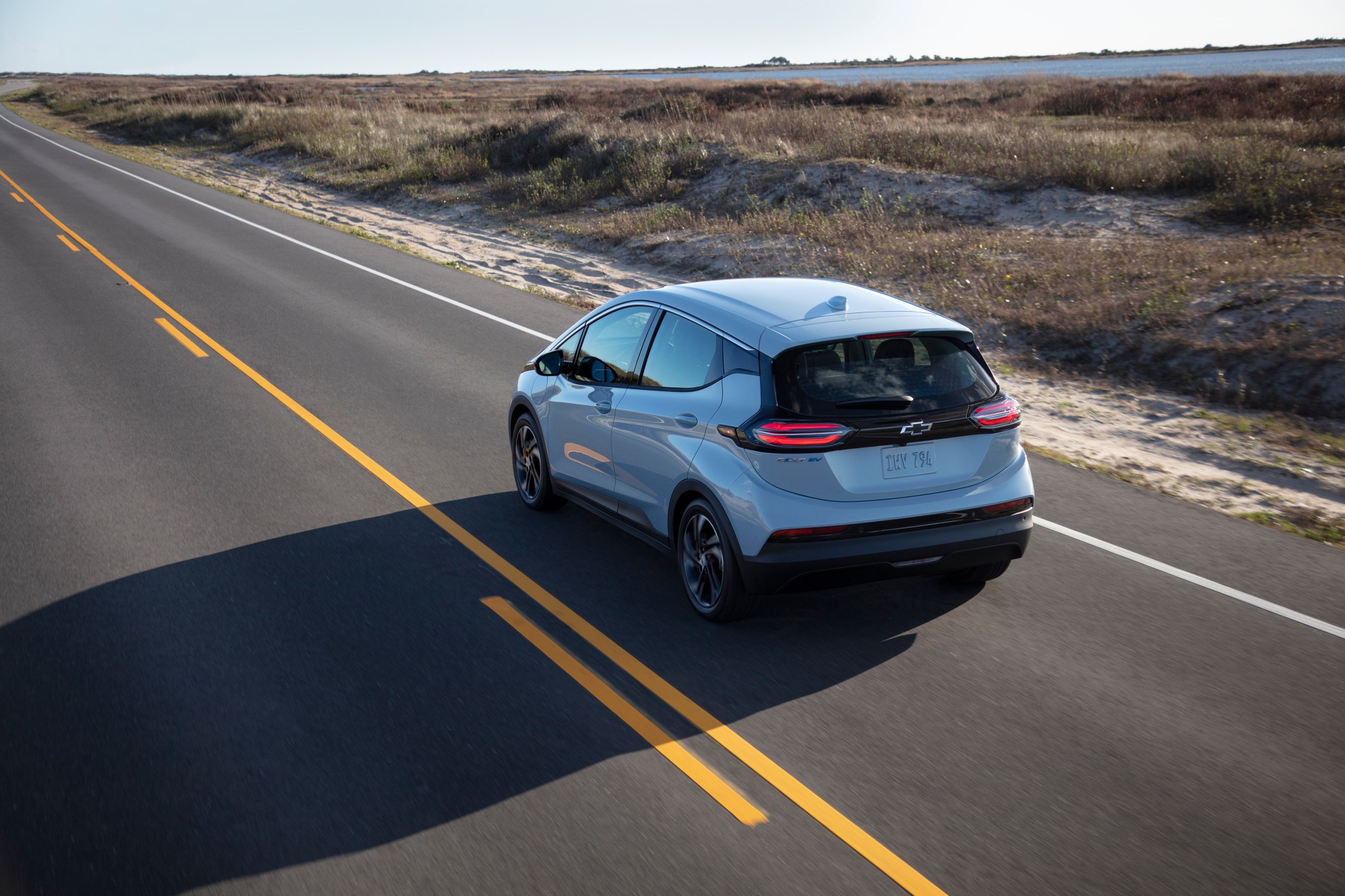Read The Full Article On: Investorplace
Patience is required, but the payoff for these stocks could outpace the sector
Last year was, among other things, the year when electric vehicle stocks finally took off. To borrow from Ernest Hemingway’s admonishment about habits, the growth of the electric vehicle (EV) sector has taken place, “gradually, then suddenly.”
The expectation of an administration that would prioritize climate change merged nicely with developments in our nation’s EV infrastructure. And as the attention of investors shifted towards electric vehicle stocks, a number of private companies seized on the opportunity to go public. Their preferred method was to use a Special Purpose Acquisition Company (SPAC). A SPAC is basically a shortcut to the traditional IPO process.
And with time being of the essence, it makes sense that many companies would choose this route. In fact, there are nearly a dozen EV-related companies that either have, or will be, going public via a SPAC.
Unlike the established EV players such as Tesla (NASDAQ:TSLA) and Nio(NYSE:NIO), these companies carry even more speculative risk. Some of these companies will not be winners, but many will. Remember, the market share for electric vehicles remains very small in the United States. The projected growth won’t take place overnight.
But if you look at the long-term stories, here are eight electric vehicle stocks that look to have a bright future.
- Ford (NYSE:F)
- General Motors (NYSE:GM)
- Volkswagen (OTCMKTS:VWAGY)
- Canoo (NYSE:GOEV)
- Romeo Power (NYSE:RMO)
- Switchback Energy (NYSE:SBE)
- Blink Charging (NASDAQ:BLNK)
- XPeng (NYSE:XPEV)
Ford (F)

Source: Jonathan Weiss / Shutterstock.com
Ford was the first legacy auto maker to go all in on electrification. The broader market never really rewarded Ford for than commitment. But the company did catch the attention of Robinhood investors who have maintained interest in F stock. Over the last five years, Ford stock has been a losing bet, but that could be changing.
Just about six weeks into 2021, F stock is up approximately 30%. And the best may be yet to come. For starters, Ford continues to be aggressive when it comes to electric vehicles. The company recently announced that it plans to go all electric in Europe by 2030. As a bridge to that future, the company plans to only offer electric and hybrid models on the continent by 2026.
In the United States, Ford’s Mustang Mach-E is slated for availability in summer of 2021. And Ford has more than a dozen EVs planned to launch in the next two years.
General Motors (GM)

Source: Katherine Welles / Shutterstock.com
General Motors is another company pledging to have an all-electric fleet by 2035. The company has launched its Ultium Platform. GM describes the platform as revolutionary and says it is designed “for range, power and flexibility to charge fast, run long and fit every type of vehicle.” GM plans to have 30 new EVs available worldwide globally by 2025.
A key part of the company’s plan is a partnership with EVgo to add over 2,700 of the latter’s new fast chargers over the next five years. EVgo has the largest public fast charging network in the nation. And all the stations are powered by 100% renewable energy.
This investment in both the lock and the key should make GM a very intriguing stock in the next few years. Investors seem to agree. GM stock is up 27% for the year and is up 215% from its pandemic low. Analysts rate GM as a consensus “buy” with recent price targets suggesting the possibility for significant gains.
Volkswagen (VWAGY)

Source: multitel / Shutterstock.com
The last of the legacy car manufacturers on this list is Volkswagen. To say that Volkswagen is going all in on electric vehicles would be an understatement. By 2023, Volkswagen is pledging to invest over $30 billion into EVs. And by 2030, the company plans for electric vehicles to comprise 40% of global sales.
Headquartered in Europe, Volkswagen is making this pivot largely because it has to. In 2020, the European Union (EU) began imposing penalties on automobile manufacturers that don’t meet strict carbon dioxide emission limits. This is forcing the shift to electric cars.
However, this may be a case where the company’s size may be a blessing in disguise. The company is still nimble enough that it may be better equipped to make this pivot. And Volkswagen has entered into a partnership in which it will share its electric vehicle technology with Ford.
VWAGY stock is up 106% from its pandemic lows. That suggests that investors are recalibrating their expectations for auto makers and are placing a bet on Volkswagen.
Canoo (GOEV)

Source: Canoo media
Moving away from the legacy car manufacturers starts becoming more speculative. There are many EV manufacturers that are carving out specific niches in the market. Canoo is one company to pay attention to because of the way it differentiates itself from the competition.
Canoo is planning to enter the EV market with two offerings, one of which is multipurpose delivery vehicle (MPDV) which will incorporate a “by wire” system as part of its “skateboard” platform. The result will be that, down the road, this design should facilitate autonomous driving capability. Canoo is also planning a last-minute delivery vehicle with a similar design.
But perhaps an even more attractive bit of innovation is how the company plans to sell (or rather not sell) their vehicles. Canoo is planning to use an SaaS model whereby consumers lease its vehicles with virtually no commitment and no long-term contract. This means that each car may have several different “owners.”
Canoo went public via a SPAC in 2020. This is a long-term play, but with GOEV stock trading at less than $20 per share as of this writing, the stock could be very attractive.
Romeo Power (RMO)

Source: Shutterstock
For our nation to realize the electric vehicle future that many imagine will require not only the vehicles, but also the batteries and charging infrastructure to support it. With that in mind, Romeo Power offers a different way to play electric vehicle stocks.
The company is providing an innovative electric battery design for the commercial market. This is an emerging market for EVs. And there is a distinct demand for it. Fleet operators are looking to electrify its fleets if for no other reason than to decrease maintenance costs. Romeo is focusing on Class 1 to Class 8 commercial trucks. Included in this group are delivery vans, long-haul buses and garbage trucks.
Romeo’s battery design offers distinct benefits. For example, the batteries offer 25% higher energy density which allows vehicles to operate further on a single charge. Second, the company is designing a lithium-ion battery that will be able to remain at optimal temperature even in extreme climates (a key limitation of many EV batteries).
RMO stock is down for the year which may be a case of bad timing. But as investors begin to expand their time horizon, Romeo Power should emerge as a solid long-term play.
Switchback Energy (SBE)

Source: Michael Vi / Shutterstock.com
Another way to invest in electric vehicle stocks is to invest in the companies that will be helping promote their adoption. That brings us to Switchback Energy.
Switchback Energy is the SPAC that is bringing ChargePoint public. In fact, by the time you read this the reverse merger may be finalized. The vote is set for Feb. 25, 2021. In which case SBE stock will be no more and ChargePoint shares will trade under the ticker symbol CHPT.
For those unfamiliar with ChargePoint, it is responsible for developing a nationwide infrastructure of electric vehicle charging stations. This creates both the bullish and the bearish argument for ChargePoint.
On the bullish side, the company has over 109,000 charging stations already in place. There’s no reason to believe it won’t be able to add to its lead. The U.S. alone will need tens of thousands of new charging stations to support the EV adoption that is being forecast.
The bearish argument is that, without a moat, this field is about to get really crowded. It’s too early to tell if that will become a reality. But I imagine its real competition may be from Tesla, which has its own proprietary charging network and even another newly public company QuantumScape (NYSE:QS) that has plans to deliver a solid-state battery.
Blink Energy (BLNK)

Source: David Tonelson/Shutterstock.com
Blink Energy is the other part of the duopoly that makes up the electric charging sector. Shares of BLNK stock at one point had soared over 3,000% in eight months. That was better than Tesla to put things in context.
However, for a company that has a market cap of just over $2 billion dollars as of this writing, it’s not generating nearly the kind of revenue growth that justifies its lofty share price. But that’s not Blink’s fault. It is, however, an opportunity. The company can use this period of “mania” to make some strategic acquisitions or build up its cash position.
Either way, the case for Blink is identical to that of ChargePoint. The nation will need charging stations and right now Blink is one of the only companies in a position to deliver. Many of these electric vehicle stocks are hard, if not impossible, to evaluate using traditional fundamental metrics. But this about a long-term story, and Blink has one.
XPeng (XPEV)

Source: Johnnie Rik / Shutterstock.com
At one point in late 2020, XPEV stock had climbed over 380% from its IPO price of $15. XPEV stock has dropped 37% from that level. But early investors are still sitting on a nice gain.
Like many electric vehicle stocks on this list, XPeng is not yet profitable and won’t be profitable for several years. Nevertheless, the largest gains to be made in EV stocks are likely to occur before profits emerge. Right now XPeng is in competition with Nio. However as I wrote in January if investors begin to compare the companies:
…they’ll have to rationalize what to think about Xpeng’s market cap, which at $35.91 billion is almost one-third of Nio’s $101.13 billion. Yet the XPEV stock price is only about 37% lower than Nio. So is Xpeng overpriced, or is Nio undervalued?
That’s the question that investors have to answer. XPeng faces formidable competition in China. But as a long-term story, there’s a lot to like about XPEV stock.
On the date of publication Chris Markoch did not have (either directly or indirectly) any positions in the securities mentioned in this article.
Chris Markoch is a freelance financial copywriter who has been covering the market for seven years. He has been writing for Investor Place since 2019.
Louis Navellier says before you buy another stock…
A signficant event is about to take place in America’s very near future.
He says this new event will make the rich even richer, while financially devastating countless others… and even further fan the flames of social protest.
He says this event has major implications for anyone in — or thinking about getting into — the stock market.
He recently put together this presentation with the full details. But we should warn you: What Mr. Navellier has to say is controversial…

